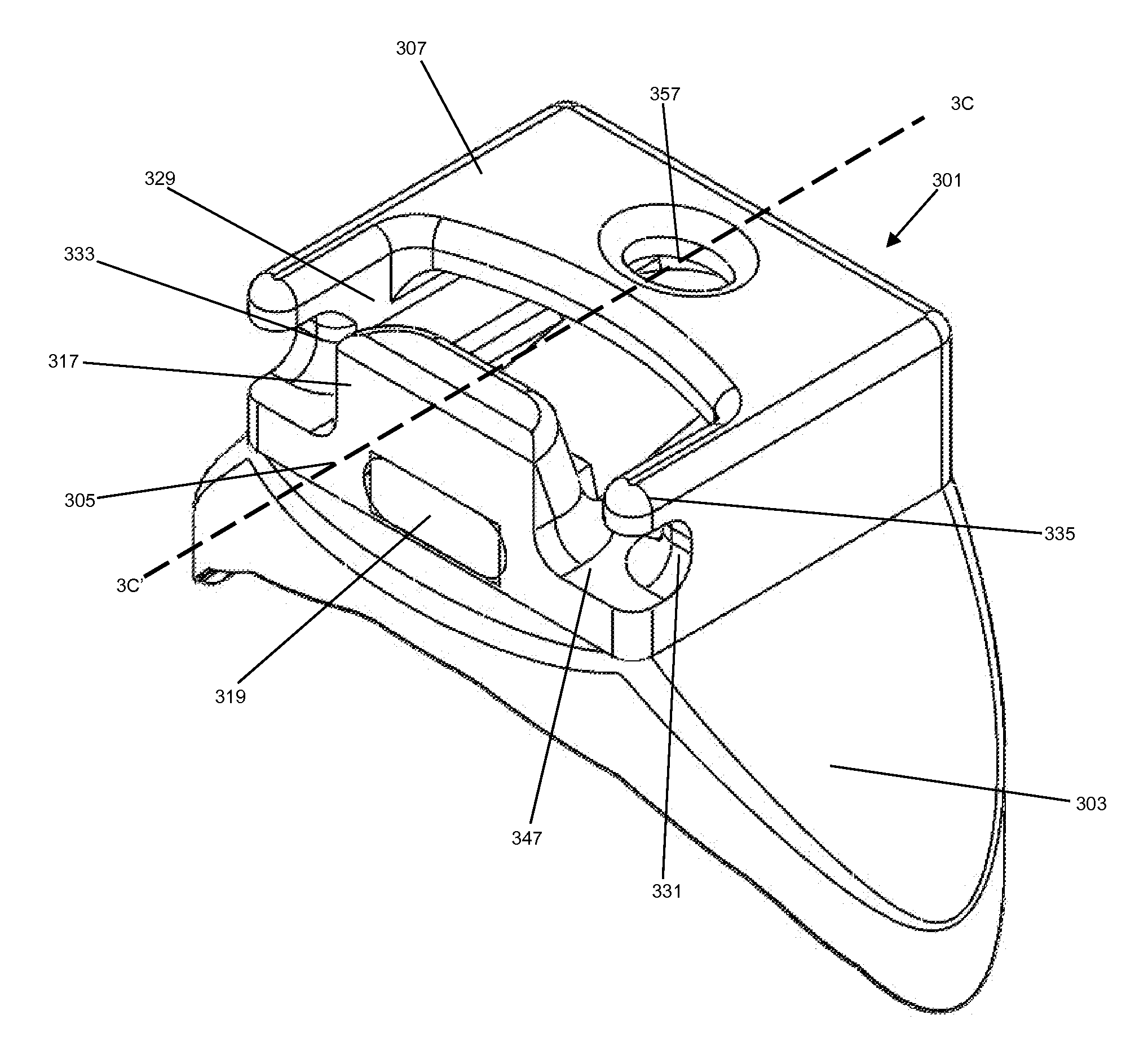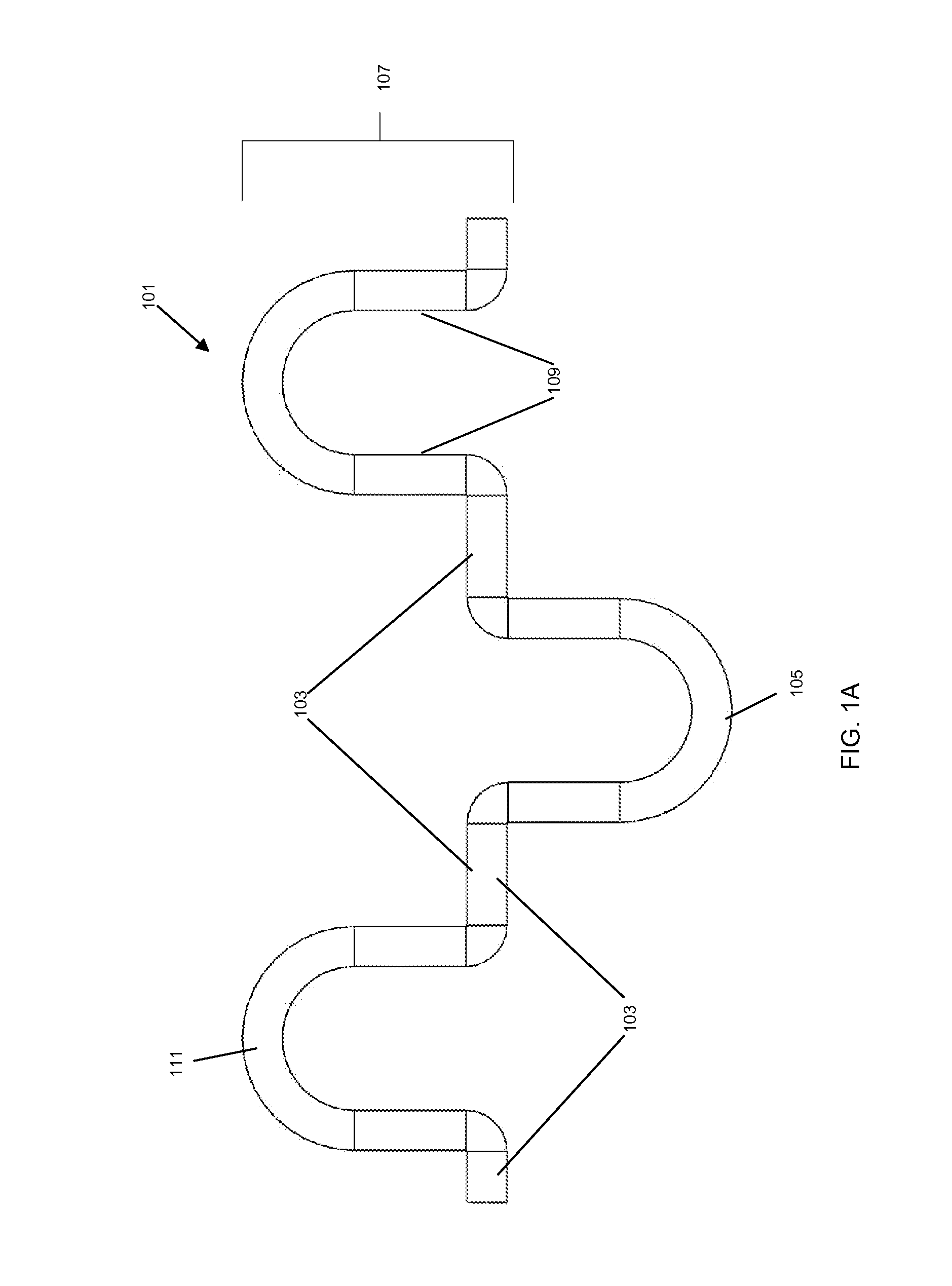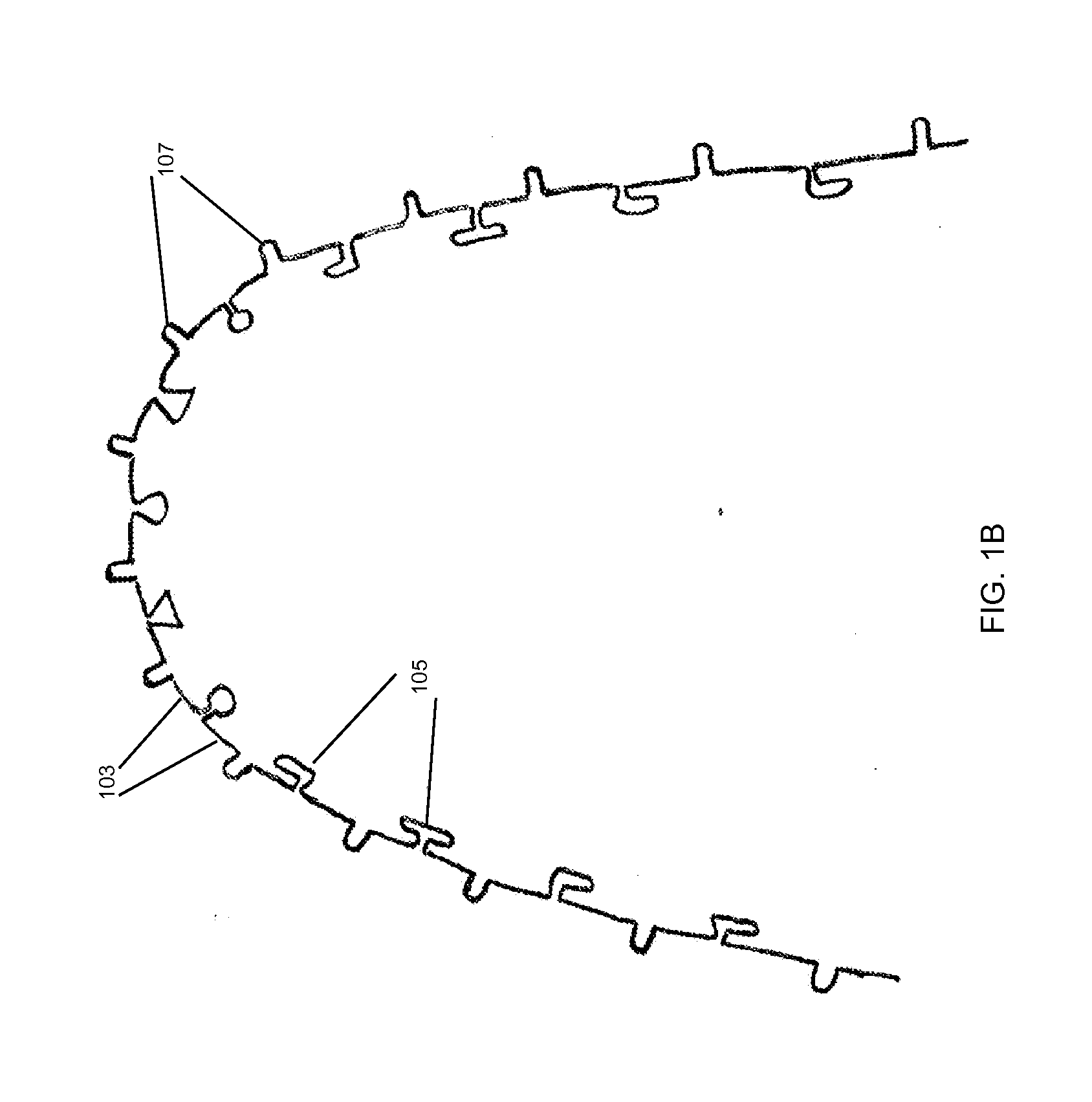Orthodontic appliance with snap fitted, non-sliding archwire
a technology of archwires and orthodontic appliances, applied in the field of orthodontic appliances, can solve the problems of requiring too much time to prepare and/or install, requiring manual labor, and requiring a human to perform the process, etc., and achieve the effect of convenient attachment of the bracket to a single tooth
- Summary
- Abstract
- Description
- Claims
- Application Information
AI Technical Summary
Benefits of technology
Problems solved by technology
Method used
Image
Examples
Embodiment Construction
[0057]Illustrative embodiments are now described. Other embodiments may be used in addition or instead. Details that may be apparent or unnecessary may be omitted to save space or for a more effective presentation. Some embodiments may be practiced with additional components or steps and / or without all of the components or steps that are described.
[0058]FIGS. 1A and 1B illustrate an archwire 101 that includes male loops 107 that each include legs 103, sidebars 109, and an arc portion 111. The male loops 107 may be configured to be inserted gingivally and may be separated by interproximal loops 105. The legs 103 may interconnect the male loops 107 and the interproximal loops 105. FIG. 1A illustrates an enlarged two-teeth section of the archwire 101; and FIG. 1B illustrates the entire archwire 101.
[0059]The male loops 107 of the archwire 101 may be configured to snap fit into an orthodontic bracket such that it will not slide with respect to the orthodontic bracket after it has been s...
PUM
 Login to View More
Login to View More Abstract
Description
Claims
Application Information
 Login to View More
Login to View More - R&D
- Intellectual Property
- Life Sciences
- Materials
- Tech Scout
- Unparalleled Data Quality
- Higher Quality Content
- 60% Fewer Hallucinations
Browse by: Latest US Patents, China's latest patents, Technical Efficacy Thesaurus, Application Domain, Technology Topic, Popular Technical Reports.
© 2025 PatSnap. All rights reserved.Legal|Privacy policy|Modern Slavery Act Transparency Statement|Sitemap|About US| Contact US: help@patsnap.com



